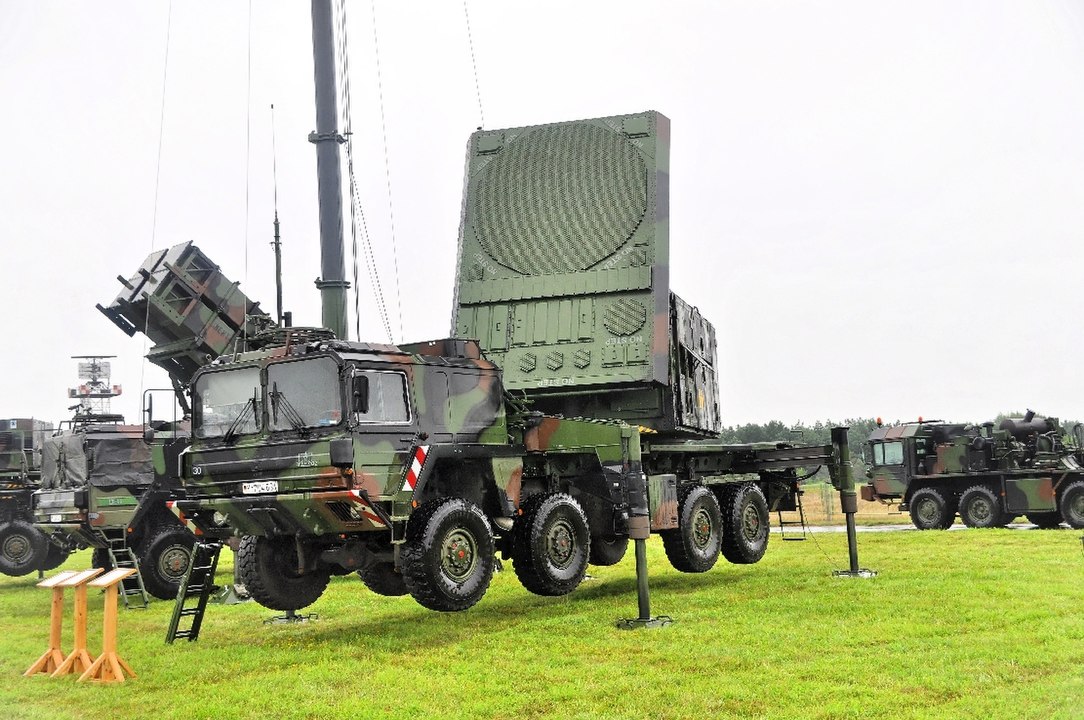
Hypersonic or Bust - How Ukrainian Downed 7 Kinzhal Missiles and Levelled the Playing Field
In just over one week, Ukrainian air defense systems accomplished what many thought was impossible. Twice. On Thursday, May 4th, and Monday, May 15th, recently delivered U.S. Patriot air defense batteries reportedly intercepted multiple hypersonic missiles over the skies of Kyiv. The initial intercept of one Kinzhal missile set off a buzz of excitement and controversy. However, when the second wave of six Kinzhals was downed before reaching their targets, it seemed that the record was written in stone. How is it that Cold War-era technology had bested a weapon that only entered service 6 years ago during a wave of modernization in the Russian military? Especially one that was touted by the Kremlin as an unstoppable weapon, capable of outpacing and outmaneuvering any existing air defense systems. Does this mean that the fear and excitement surrounding hypersonic weapons is misplaced?
In order to tease out an answer to these questions it is necessary to unpack the incidents from earlier this month and some of the mystique surrounding the Kinzhal missile. The Kinzhal (Russian for “dagger”) is one of Russia’s three hypersonic threats, that are either in service or development, and is claimed to have reached speeds of Mach 10. However, unlike the Avangard or Zircon, which are hypersonic glide vehicles (HGV) and hypersonic cruise missiles respectively, the Kinzhal is neither. In reality, it is a modified Iskander ground-launched ballistic missile that is air-launched from a Mig-31. It uses the fuel saved from bypassing the ground launch to reach astronomical speeds as it approaches the target. This presents some key differences between true hypersonics like the Avangard or Zircon, and missiles that can simply reach hypersonic speeds.
The V-2 rockets used by the Nazi Reich at the end of WWII were themselves hypersonic missiles - in that they attained the generally agreed upon Mach-5 threshold (or about 1 mile per second). In fact, most ballistic missiles reach speeds above Mach-20 during reentry but rapidly decelerate as they plunge through the atmosphere from space. It is the predictable and parabolic path of ballistic missiles that makes them relatively easy to detect and calculate the path for an intercept. What makes the Zircon and Avangard (neither of which have seen any use in Ukraine, despite claims the Zircon has entered service) different from traditional missiles is their continuous speed and variable flight path.
On the one hand, Zircon uses a specialized engine known as a scramjet (which can only be ignited at speeds of around Mach-4) to travel the entire distance at a velocity and altitude that makes detection and interception nearly impossible, whereas the Kinzhal only boosts itself to hypersonic speeds shortly after launch. On the other hand, the Avangard is an HGV which means that it reaches ballistic missile speeds after descending from space, but does not follow a parabolic or predictable path. Moreover, its aerodynamic profile is designed to provide minimal air resistance and maximum maneuverability during its approach to the target. Contrariwise, the Kinzhal was never designed with such extreme maneuverability in mind.
Although it goes to show that the Kinzhal is not quite the unstoppable hypersonic marvel that it was unveiled as, this does not mean that the incident should be taken lightly. The shoot-down of not just one, but all 7 Kinzhal missiles demonstrates the Patriots system's nascent ability to take on legitimate hypersonic threats given proper detection and heads-up time. Despite some denials, the use of Kinzhals is at least somewhat corroborated by the Russian claim that during the May 15th strike it used Kinzhal missiles in the strike to “completely destroy” multiple components of a Patriot missile battery. These claims were countered by U.S. officials who indicated that the systems were only minorly damaged but remained fully operational. Considering that on Sunday, May 28th, Russia launched 59 Iranian-made Shahed kamikaze drones at Kyiv, of which 58 were reportedly shot down, and then mere hours later, on Monday morning they followed up with a bombardment of 11 Iskander missiles - all of which were reportedly shot down - it seems likely that the Patriot battery is indeed still operational, and likewise engaged multiple Kinzhal missiles in the preceding days.
As mentioned before, there has been some controversy over the veracity of the initial intercept on May 4th. This was exacerbated by the fact that the Ukrainian air force initially denied the intercept in the immediate aftermath of the barrage, downplaying an article by Defense Express from May 5th that speculated on the nature of an unusually loud explosion heard overhead on the night of May 4th. And just the next day, the Ukrainian Air Force Commander Mykola Oleshchuk reported that a Kinzhal had been used on the night of May 4th and that it was the Patriot system which shot it down. In reference to the initial denials, the commander uttered a Ukrainian parable about keeping mum so as not to aid one’s enemy.
Additionally, many skeptics criticized footage of the missile’s debris which was first released by Kyiv Mayor Vitaliy Klitschko on May 10th. Cynics pointed to the similarity in shape between the purported missile components and another Russian bomb known as the Betab-500. However, there are a number of issues with this theory: firstly, the Betab-500 is an air-dropped bomb with no flight capabilities. It is a bunker-buster of the “dumb bomb” variety (i.e. it has no guidance systems) that would have required a bomber to be flown over Kyiv, and what’s more, the Kinzhal uses a nearly identical warhead (as seen in the source diagram) inside the body of the missile as the Betab-500. This similarity in appearance between the missile components seems to be the source of confusion and denial by the Russian side. And thanks to the meticulous work of open-source intelligence analysts we can rely on more than Ukrainian and American defense agencies' claims to verify the intercept.
As the war enters its second summer, the apparent Russian preference for expending vast quantities of its long-range and precision munitions on well-defended areas around Kyiv illustrates the more symbolic and shortsighted nature of the Russian Ministry of Defense’s (MOD) targeting priorities. While lobbing millions of dollars worth of munitions at your enemies’ capital may allow you to publish outlandish claims for domestic propaganda value, it does nothing to blunt the staging and execution of the much anticipated Ukrainian counteroffensive. One that will be powered by an influx of international military aid that has finally been trained on by and reached service in the Ukrainian military.
As of early March, 31 percent of tanks and 76 percent of other armored fighting vehicles had been delivered to Ukraine for the planned counteroffensive, according to classified U.S. military documents that were part of the recent Discord Leaks, and American officials have indicated that far more has been delivered in the months since. In contrast, multiple analysts believe that the anticipated Russian Spring offensive began months ago, and the lack of intensity or movement of the front lines demonstrates the beleaguered and degraded state of the Russian forces. The expenditure of so many munitions on such a hardened target as Kyiv rather than Ukrainian defensive positions during their offensive is likewise a strange and tactically questionable choice.
Not only are Kinzhals being used in a less effective manner by the Russian MOD, but their recent interceptions also illustrate that they are not the decisive weapon the Kremlin made them out to be. The biggest takeaway from these incidents is that given ample detection, interception with existing systems is feasible. As it currently stands, the U.S. no longer relies on ground-based systems to detect missile launches, which are the most vulnerable to hypersonic weapons. The U.S. Space Command operates the world's most advanced Space Domain Awareness (SDA) system through a comprehensive array of detection satellites, air radar systems, and international commercial partnerships that augment the old-school ground-based platforms. For the fiscal year of 2023, the U.S. Space Force has requested $584 million for developing and operating SDA missions. As these programs reach maturity, the nascent yet proven ability of the Patriot and other platforms like the Aegis ship-based interceptors to take on hypersonic threats will only improve.
Back in 2021, when Platform Mag covered the Chinese tests of a hypersonic glide vehicle, we concluded that the development of hypersonics was not necessarily a strategic game changer. This premise rested on the fact that both nations already have large enough arsenals of nuclear weapons to merely swamp air defenses and demolish unacceptably large swaths of each others’ territory in a time of war. Thus, adding a new weapon that can evade air defenses (but is too costly to be made en-masse) does not change the strategic parity between the United States and China. However, Russia is already at war with Ukraine, and Ukraine has already received Patriot batteries. Therefore, the development that Patriots can neutralize a weapon that the Ukrainians previously had no answer to is a game changer. It will limit the effectiveness of incessant Russian attacks on critical infrastructure, perhaps alter Russian targeting choices, and allow the Ukrainians to protect key elements of their war effort. In summary - the ability to intercept hypersonics has more of an impact than the development of the weapons themselves.
